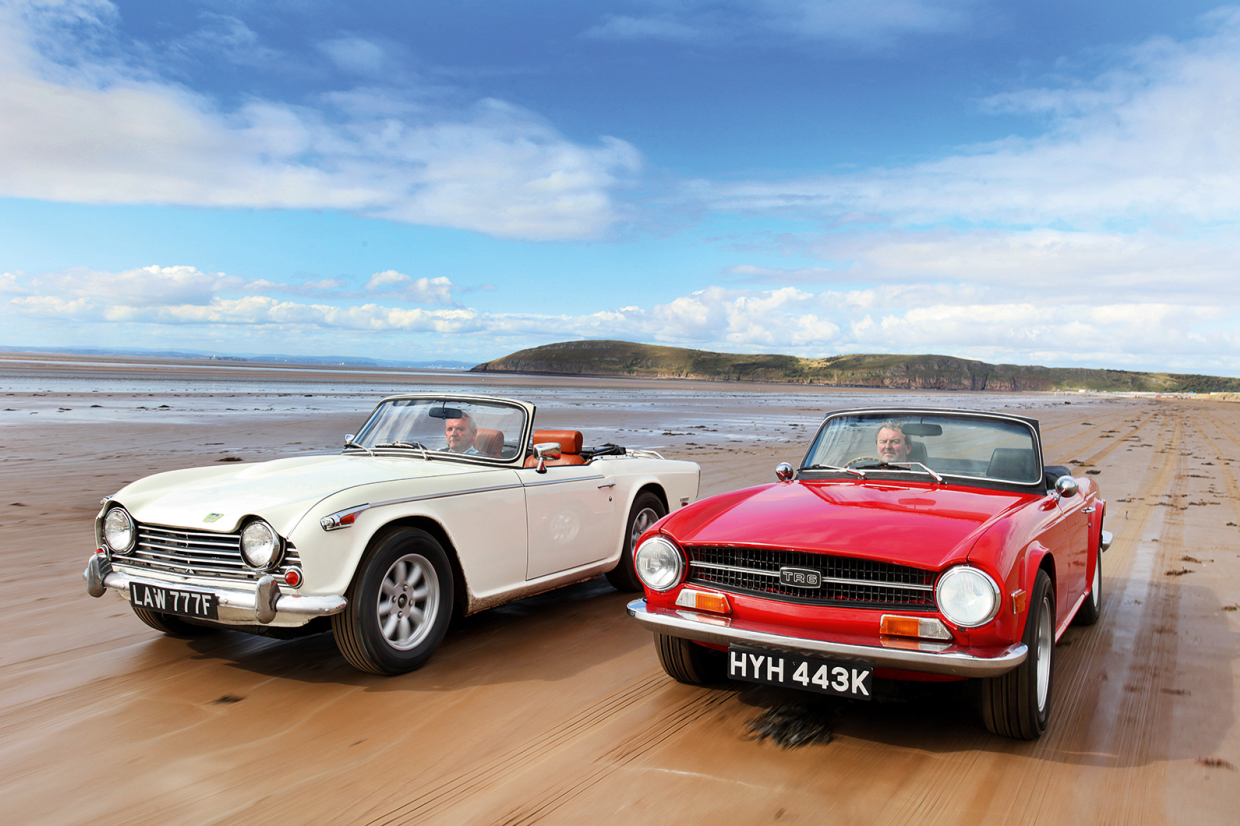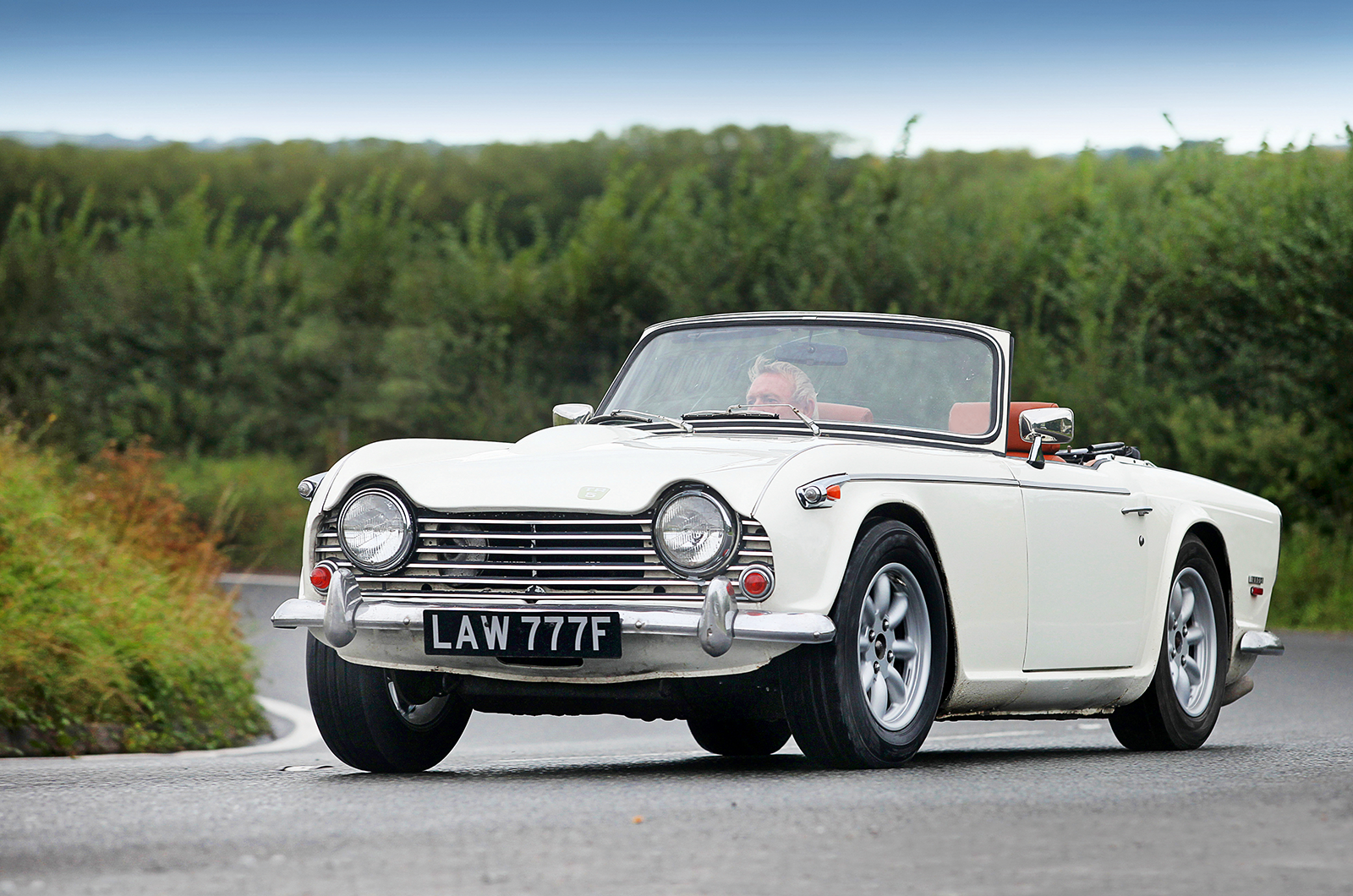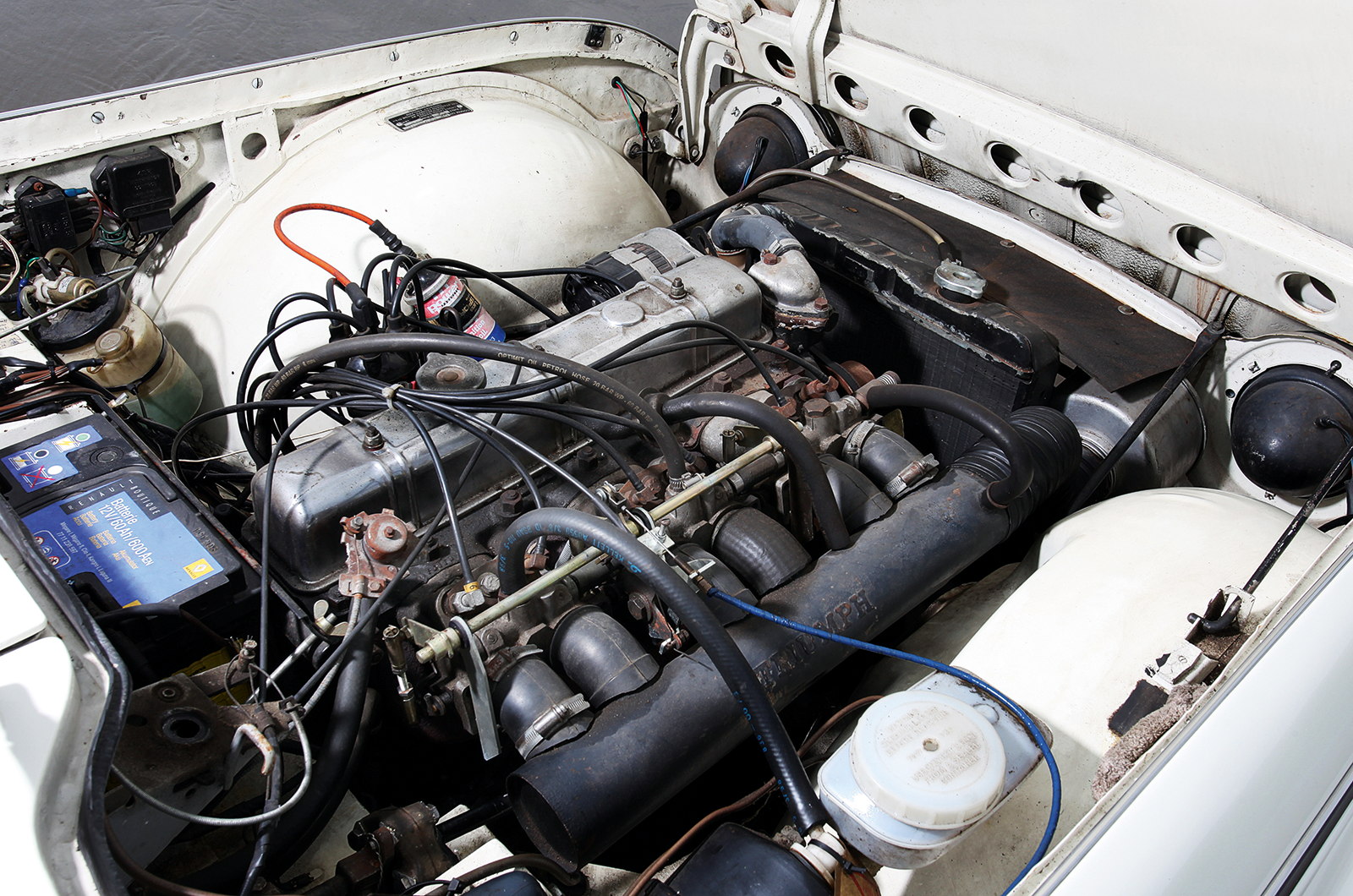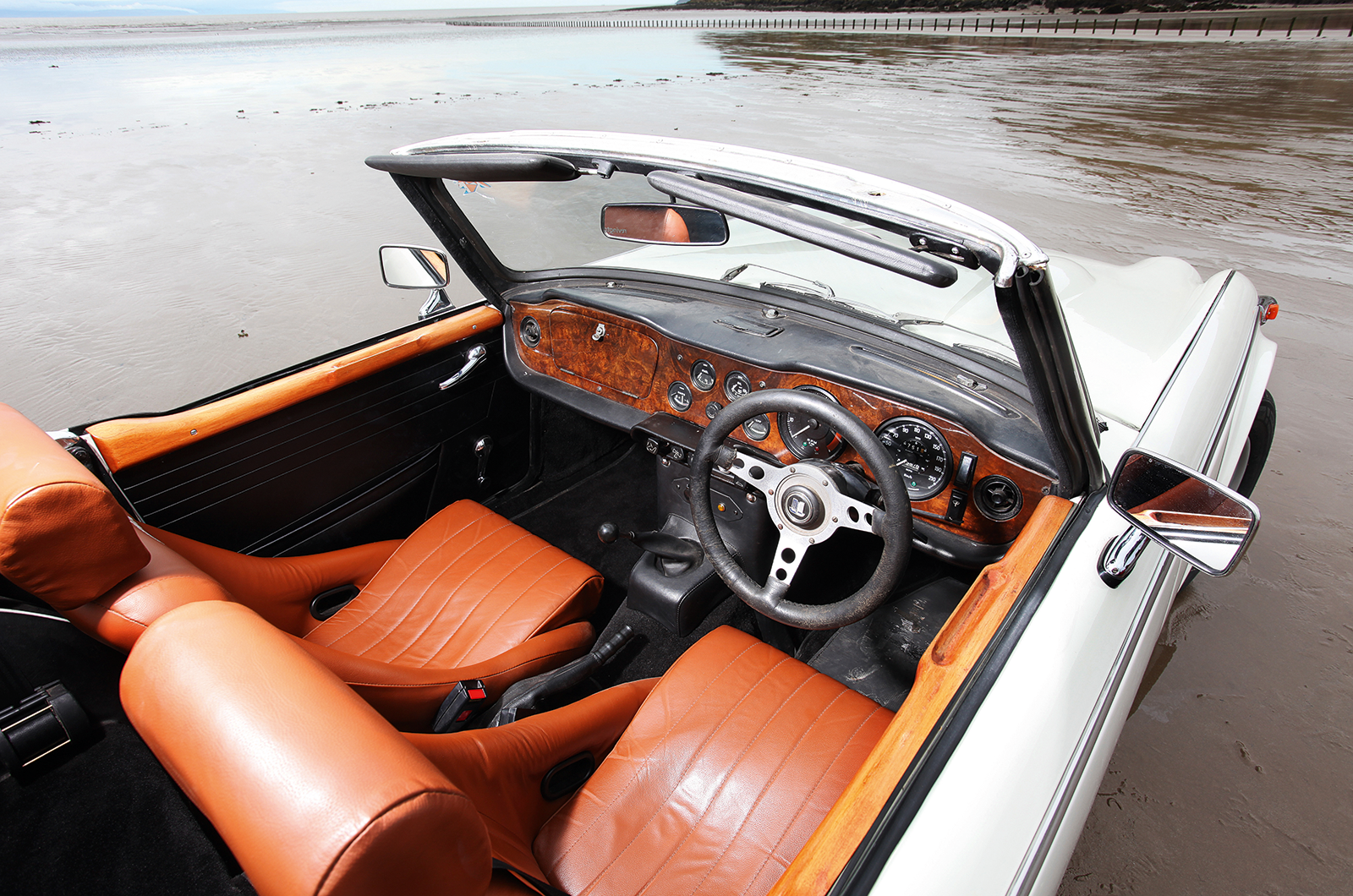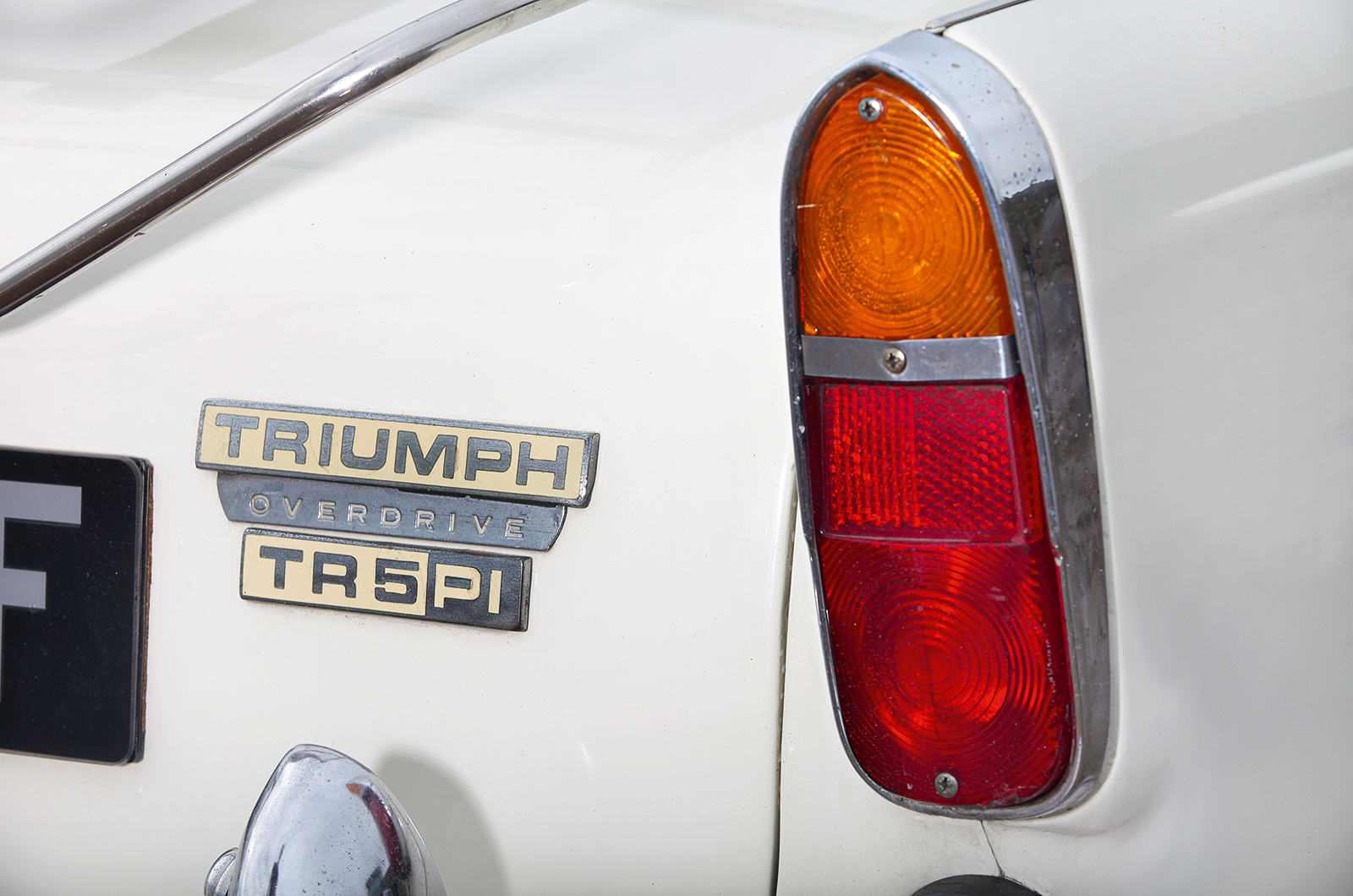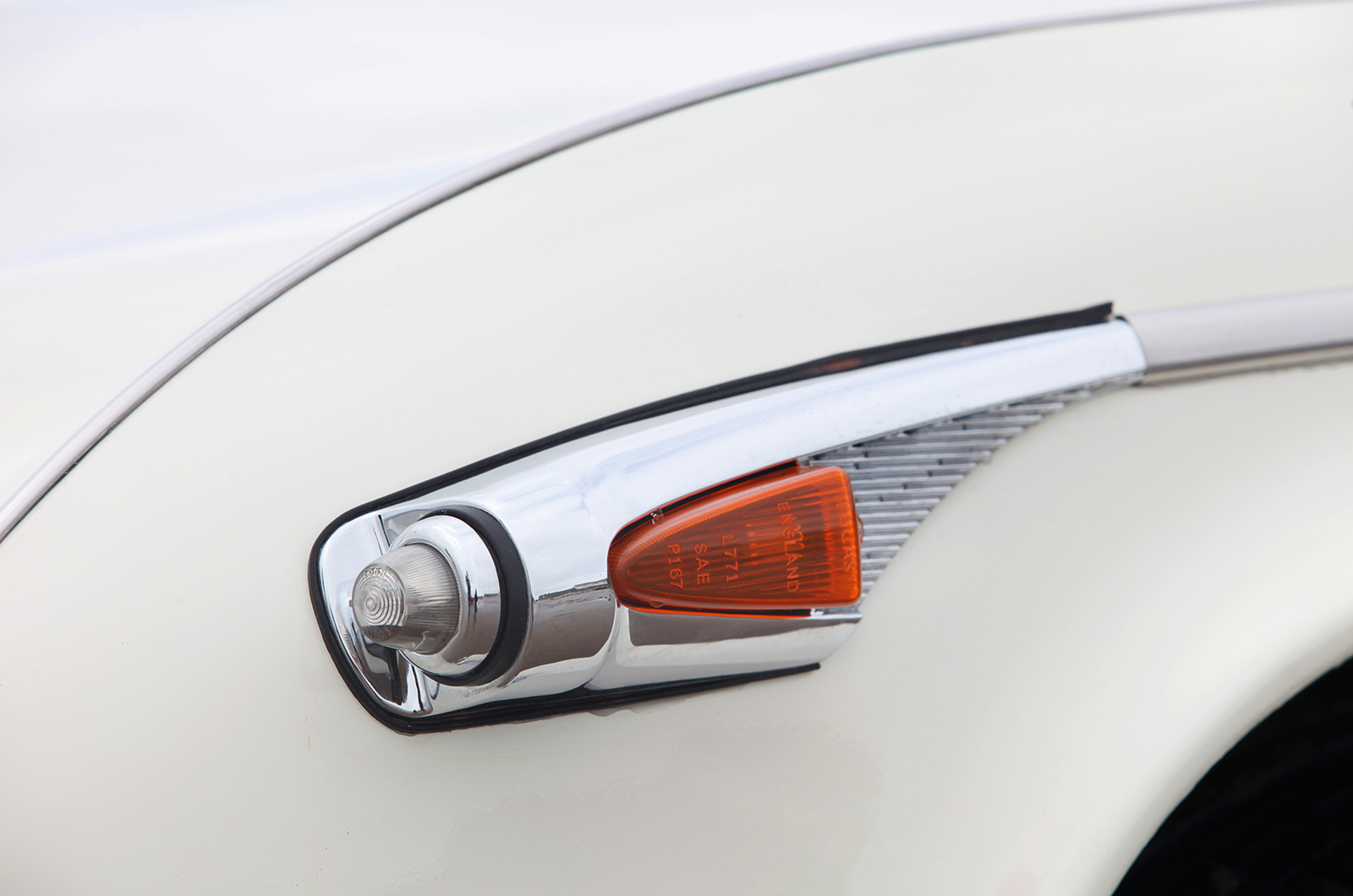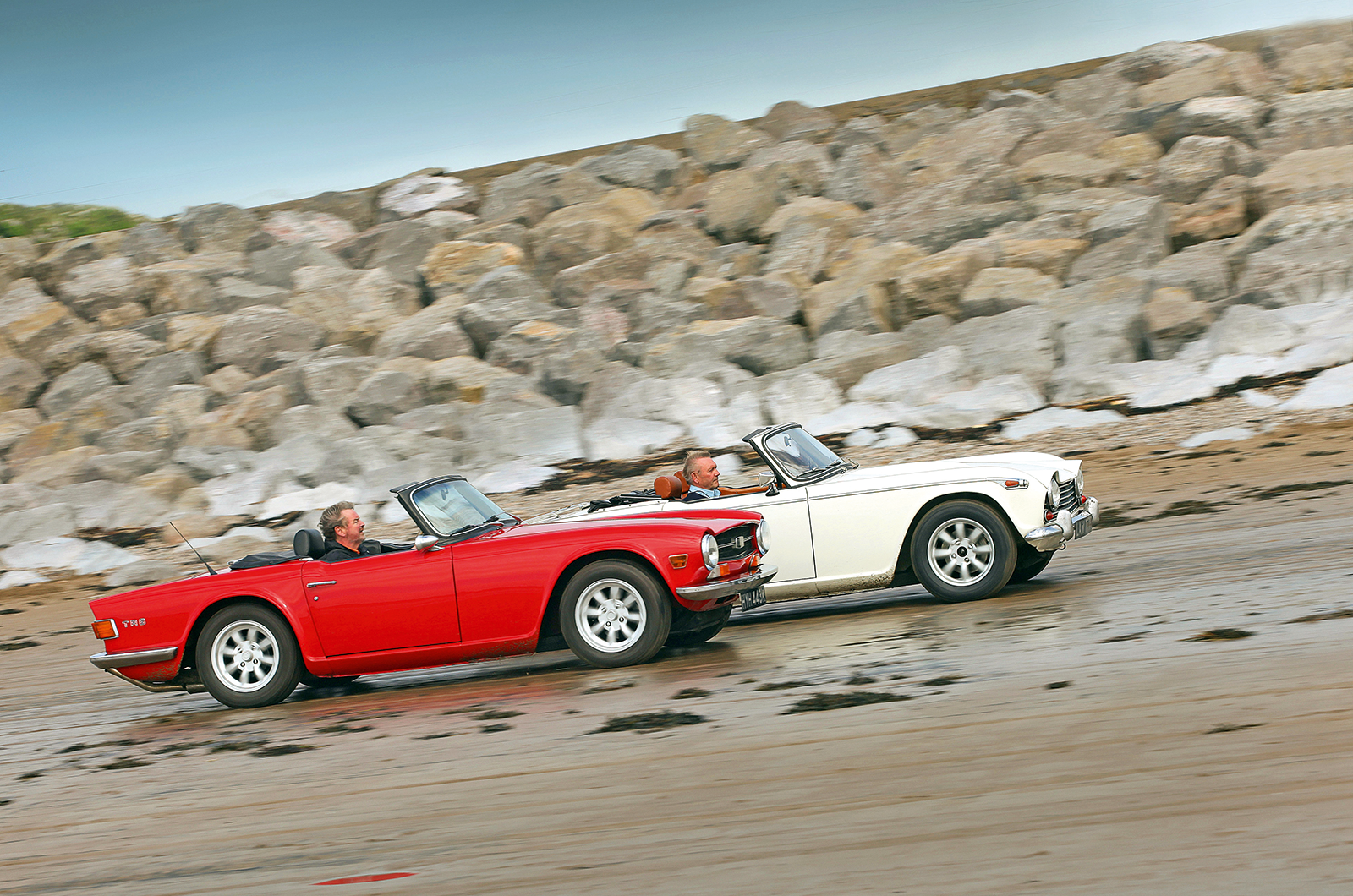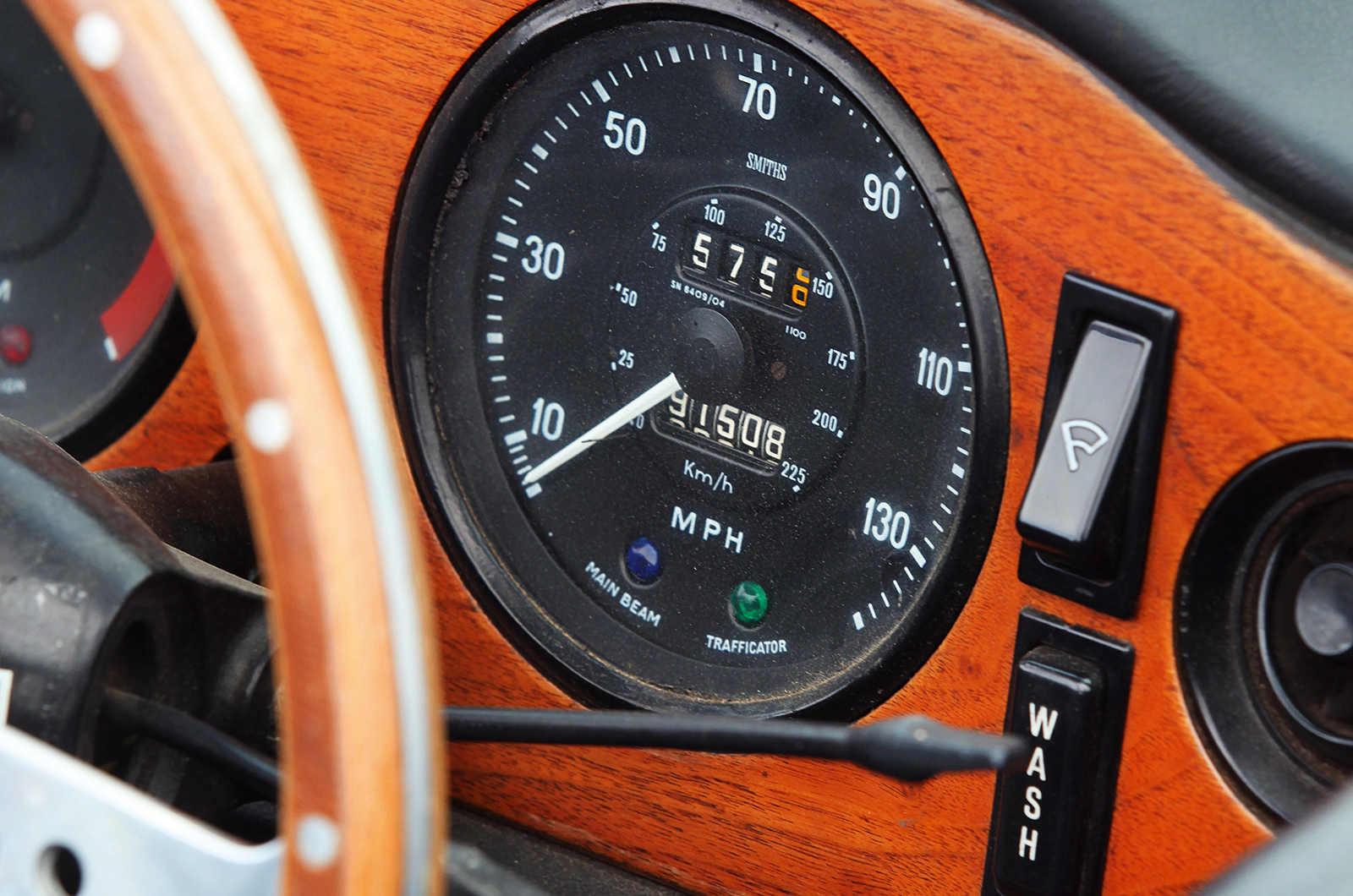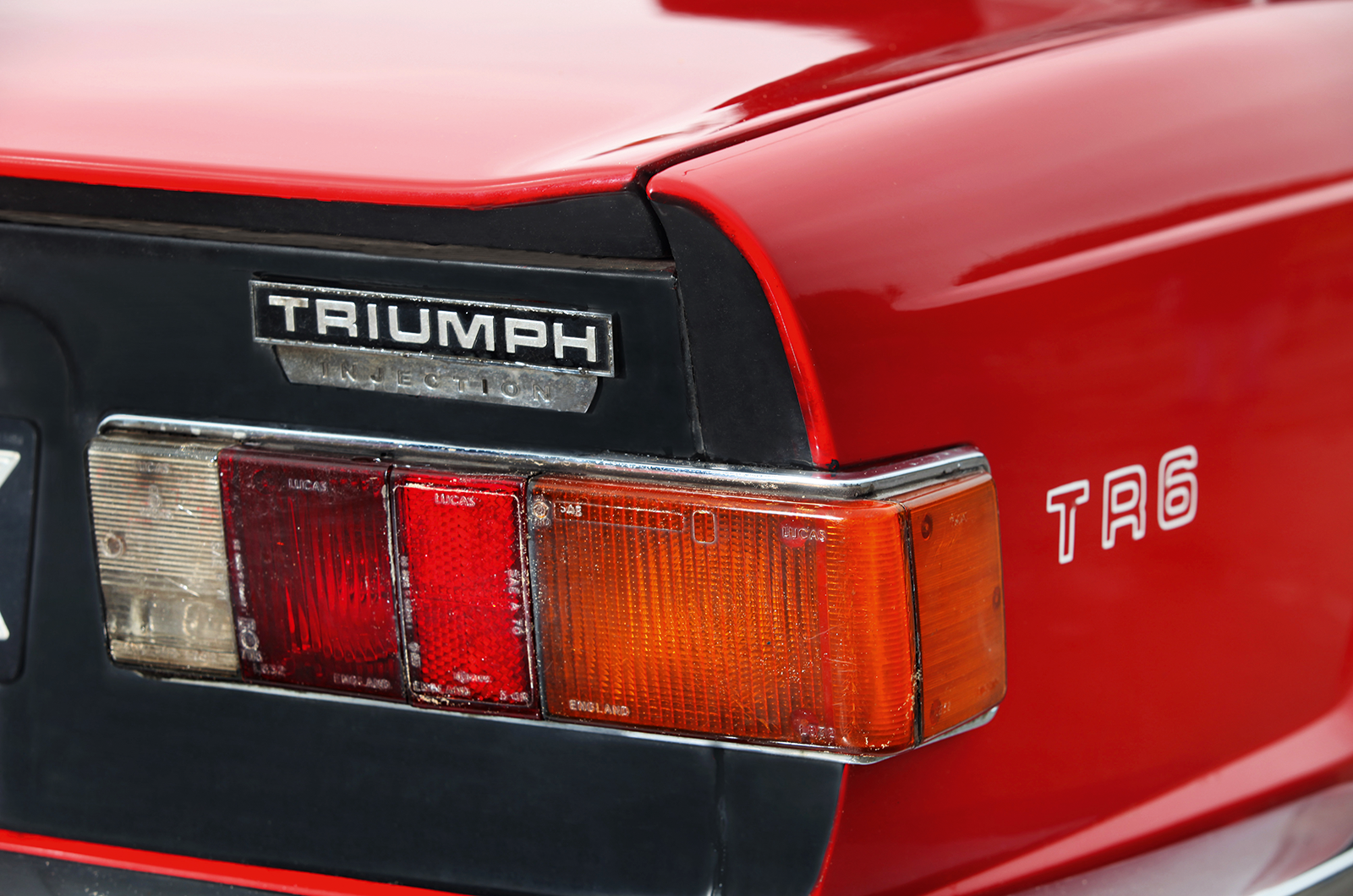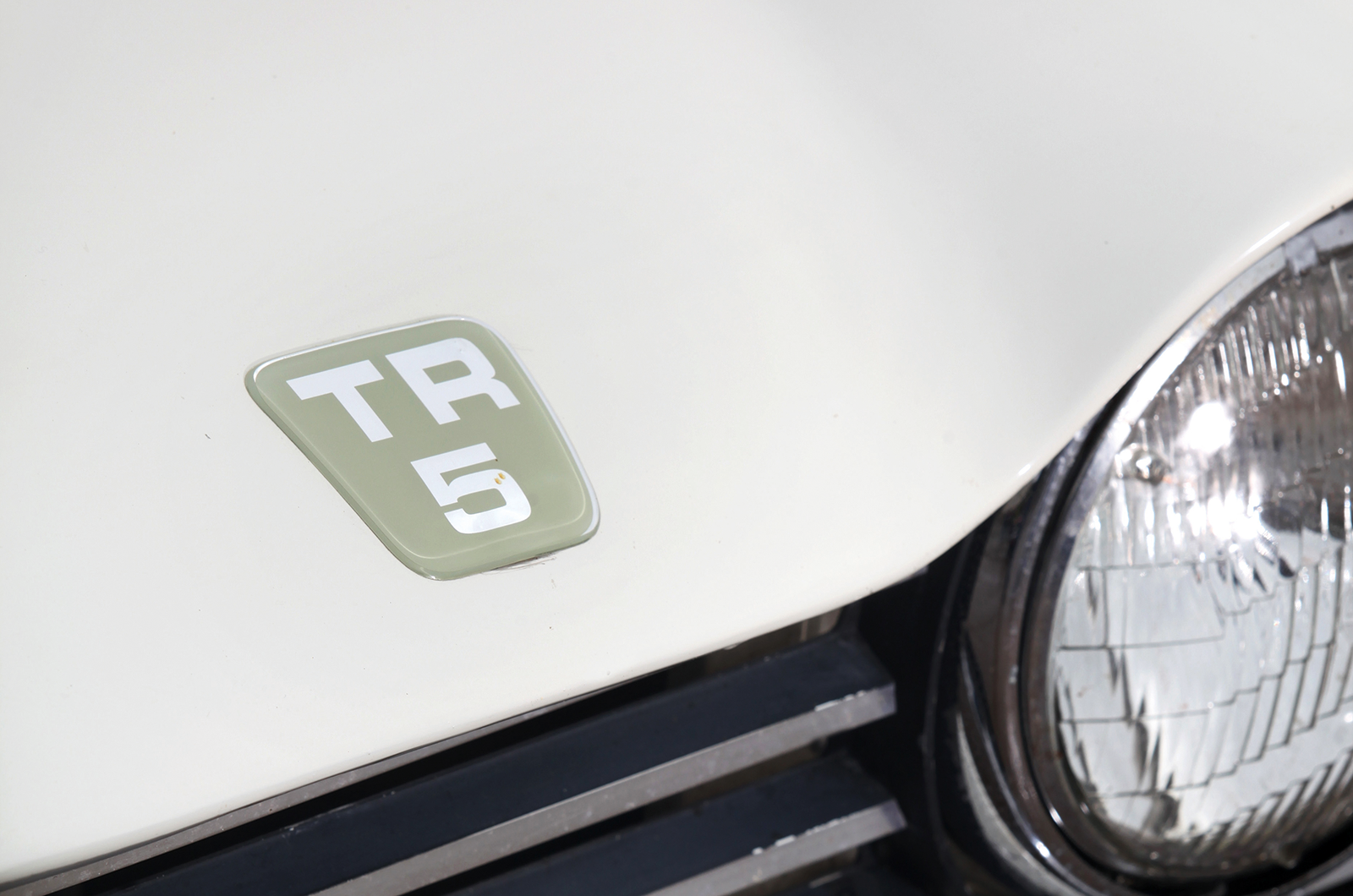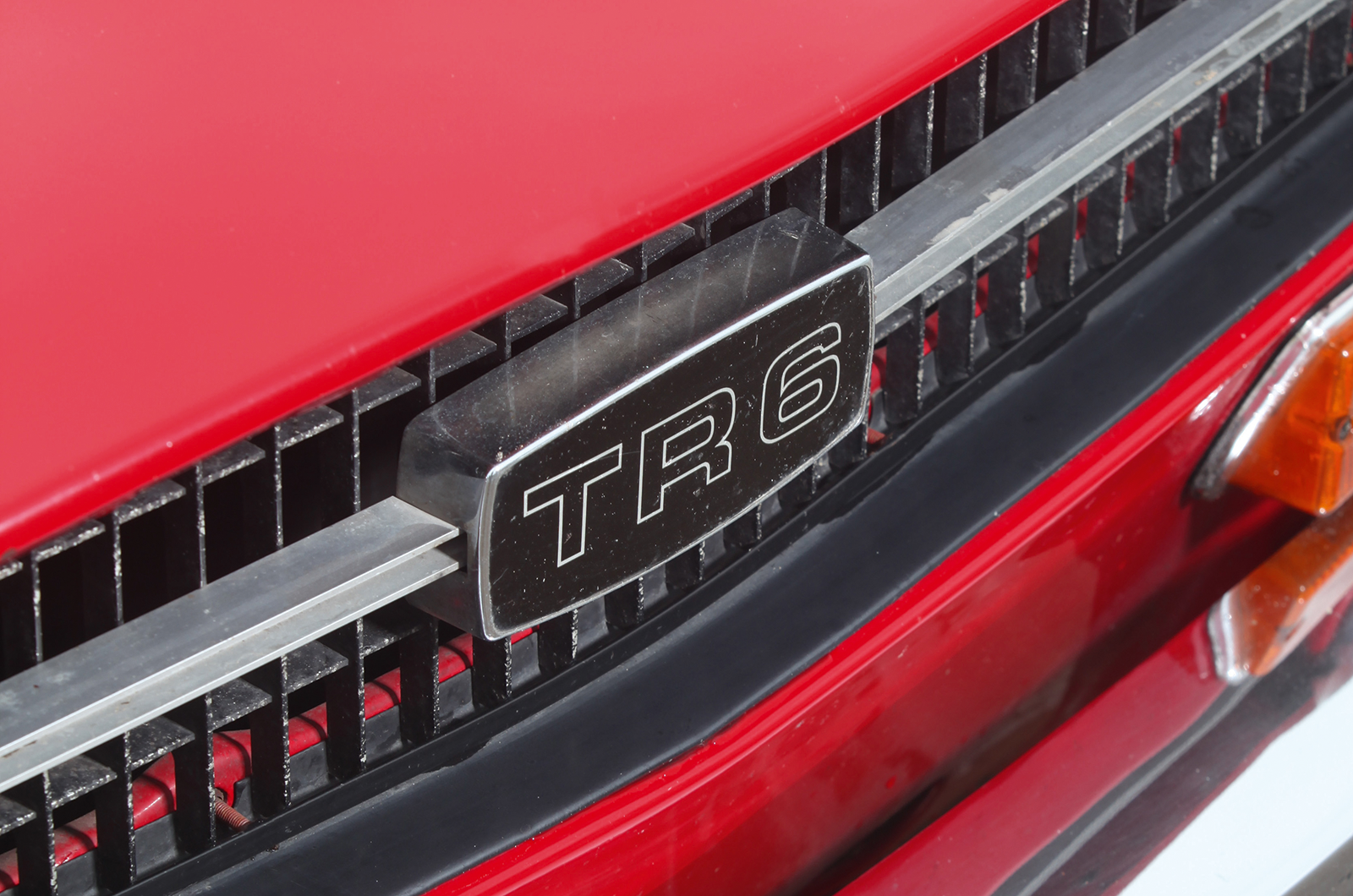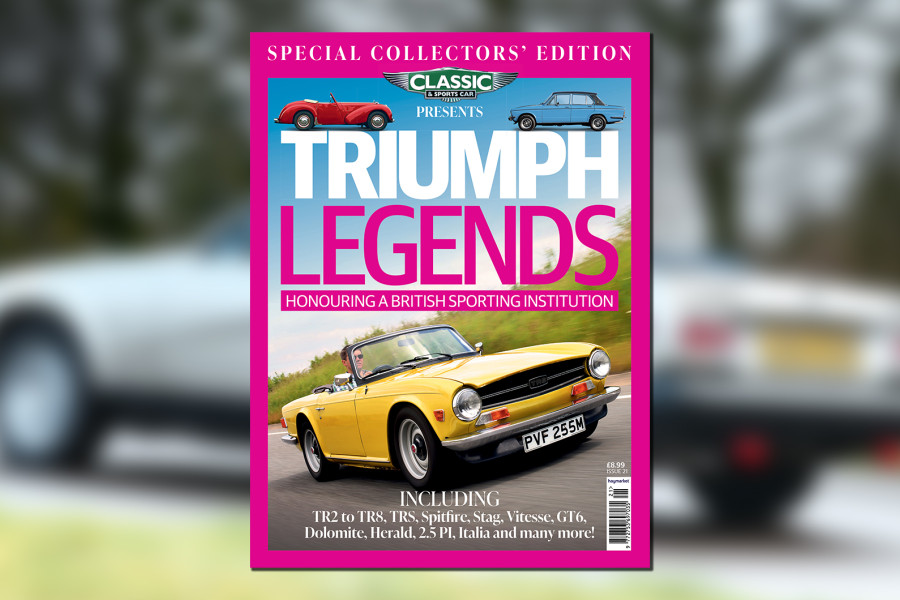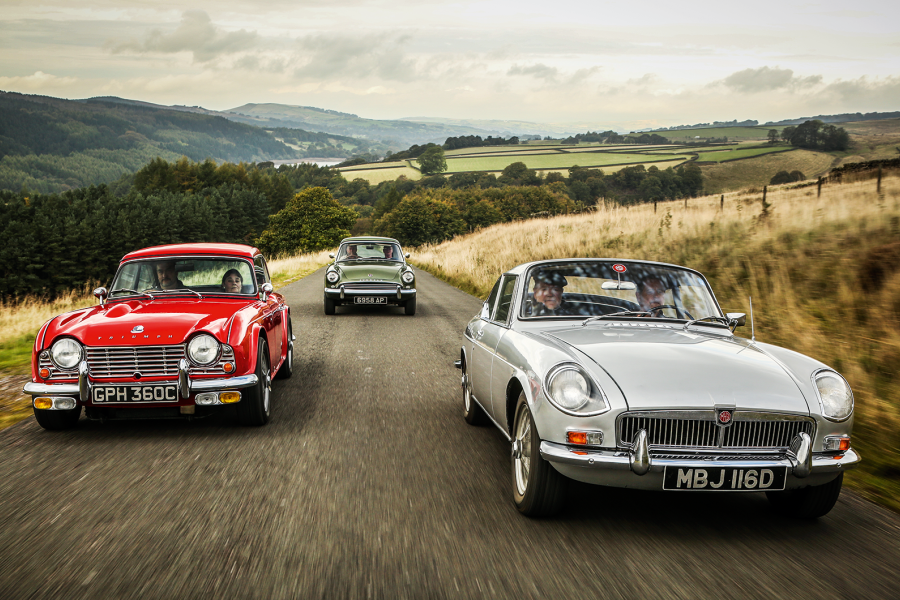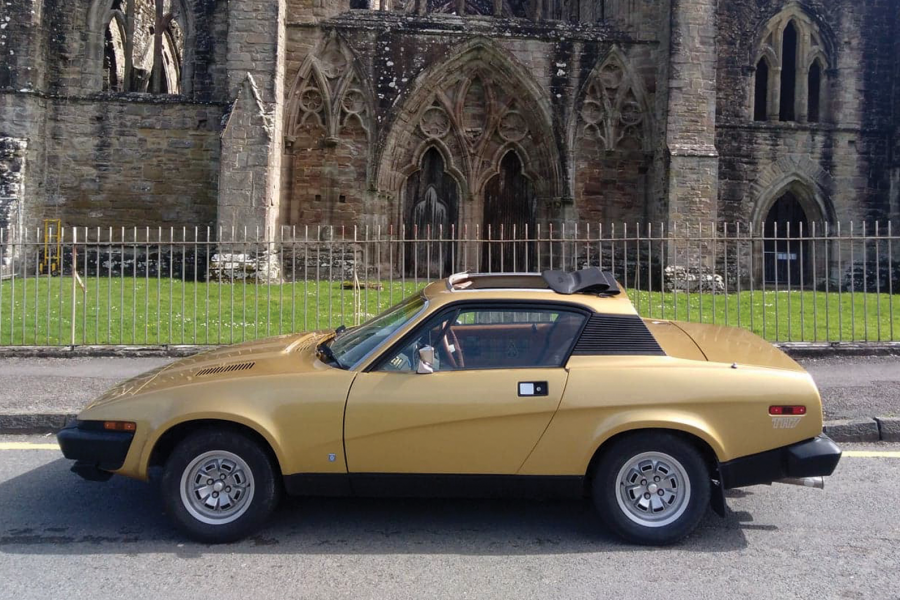So, on the hoof it’s basically the same experience: hefty clutch and notchy but positive gearchange, strong brakes and, of course, that majestically gruff powerplant sitting at the heart of things.
Like the 5, it has very good roadholding, but the addition to the front suspension only really makes itself known at the edge of hard cornering, where it reduces the tendency to rapidly flip from understeer to oversteer if you lift off the throttle.
One downside of Karmann’s quick turnaround is an increased bulk of 205lb, but on the road it feels only marginally slower than its older sibling.
The matt black Kamm tail emphasises the chunky rear light cluster
This didn’t bother Autocar, which, still lamenting the demise of the Big Healey in ’68, praised the TR6 both for its fresh new aesthetics and familiarly brawny driving experience: ‘It is very much a masculine machine, calling for beefy muscles, bold decisions and even ruthlessness on occasions. It could be dubbed the last of the real sports cars… and is tremendously exhilarating to drive anywhere.’
Others, including Car and Driver, suggested you leave your preconceptions behind the moment you open the TR6’s door, and simply enjoy it as the last of the true British sports cars.
So, back to the original question: 5 or 6? There are a couple of key considerations first, says Revington.
“The most important thing about these cars is the fuel injection; it can be what makes one good, but also what makes one terrible, as well.”
The Lucas system, which drew petrol from the tank through a paper element filter by means of a motor-driven pump, quickly gained a reputation for being unreliable.
As Revington puts it: “Early TR5s in essence had development fuel injection, but by the late examples and early TR6s – both designated CP – they were nearly there. The filter housing was also used as a swirl pot, to ensure that you didn’t run out of puff going round corners.
“This Lucas CAV diesel-filter arrangement had an aluminium tube running down to the bottom to pick up fuel, but looked identical to the standard filters that didn’t. The problems occurred when owners changed the original items for these, a trivial mistake but one that could make or break performance by causing fuel starvation.”
Would you take the 5 or the 6?
The other question is power. In ’73, the later – CR – unit received a milder camshaft; this lent the engine greater flexibility.
But, with a recalculated power output of 124bhp, they’re sometimes looked down on against the 150bhp CP cars.
“Apples and pears,” says Revington. “CP cars were tested to SAE specifications, which stated 150bhp but was often considerably less – the reality is usually 135-138bhp. CR cars were tested to DIN regulations, at 124bhp but usually better at around 130bhp. So the difference can be as little as 5-8bhp.
“Triumph also put a dedicated swirl pot in the fuel tank, to avoid problems caused by owner tinkering. All cars originally had a Lucas fuel pump, but these days we fit a Bosch unit that works properly and avoids the need to stop and buy a bag of frozen peas to hold round it until it has cooled down.”
We’re doubly lucky in the classic car world. We can revisit the past and right design wrongs, but more importantly modify that unwritten rule of automotive desire. With the benefit of hindsight, that fickle march of fashion can be reversed – with the newer model not necessarily being the one that we covet.
Images: James Mann
Thanks to Nick and Dave Morgan; Revington TR
This feature was originally published in our November 2014 magazine, all information correct at the date of original publication
FACTFILES
Triumph TR5
- Sold/number built 1967-’68/2947
- Construction steel chassis, steel body
- Engine all-iron, overhead-valve 2498cc ‘six’, with Lucas mechanical fuel injection
- Max power 150bhp @ 5500rpm (CP)
- Max torque 164lb ft @ 3500rpm (CP)
- Transmission four-speed manual (with optional overdrive), driving rear wheels
- Suspension: front double wishbones, telescopics rear semi-trailing arms, lever arms; coils f/r
- Steering rack and pinion
- Brakes discs front/drums rear, with servo
- Length 12ft 11½in (3949mm)
- Width 5ft 1in (1549mm)
- Height 4ft 2in (1270mm)
- Wheelbase 7ft 4in (2235mm)
- Weight 2268lb (1029kg)
- Mpg 20
- 0-60mph 8.1 secs
- Top speed 120mph
- Price new £1212
Triumph TR6 (where different)
- Sold/number built 1969-’ 76/94,619
- Max power 124bhp @ 5000rpm (CR)
- Max torque 143lb ft @ 3500rpm (CR)
- Transmission o/d standard from ’ 73
- Suspension: front anti-roll bar
- Length 13ft 1½in (3975mm)
- Weight 2473lb (1122kg)
- 0-60mph 8.2 secs (9.1 secs CR)
- Top speed 119mph
- Mpg 21
- Price new £1334
READ MORE
Sixties summer stunners: Herald vs Beetle vs Caravelle
Budget sporting saloons: Triumph Vitesse vs Vauxhall Viva GT
Future focused: Austin A40 vs Ford Anglia vs Triumph Herald
Ross Alkureishi
Ross Alkureishi is a contributor to Classic & Sports Car
